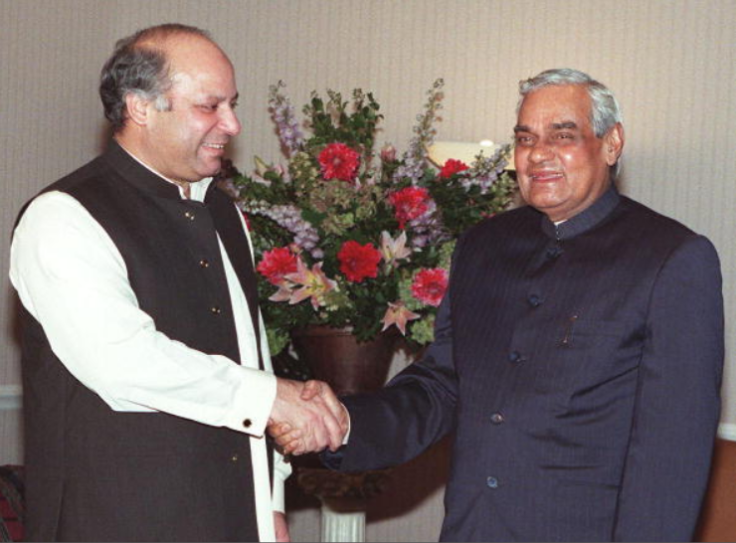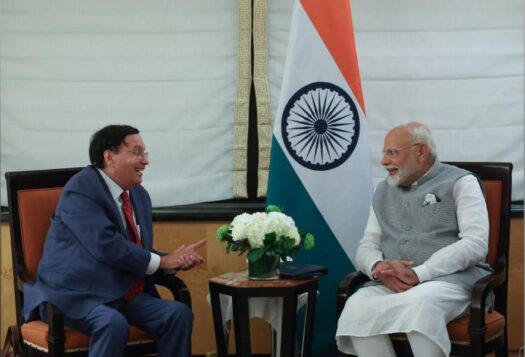
In May 2016, the South Asian Voices series “18 Years On: Examining the State of India-Pakistan Nuclear CBMs,” asked contributors to explore the effectiveness of confidence-building measures (CBMs) between India and Pakistan since the two countries’ 1998 nuclear tests. In this series, SAV contributors Arka Biswas, Sitara Noor, Sobia Paracha, and Tanvi Kulkarni looked at the role of nuclear CBMs in India-Pakistan bilateral relations and proposed potential new approaches for mitigating risk and enhancing stability.
In this piece revisiting the series nearly five years later, each contributor reflects on his or her analysis in 2016 and the state of nuclear CBMs between India and Pakistan today. While much has changed in South Asia over the course of the past five years, the series remains a timely look at the state of nuclear CBMs between India and Pakistan, and potential future avenues of confidence-building.
India-Pakistan Nuclear CBMs: Focusing on the Subconventional
By Arka Biswas

Subconventional warfare with or without deep state-support has continued between India and Pakistan since 2016. A series of terrorist attacks continued apace in Indian-administered Kashmir, including the Pulwama terror attack of February 2019 which led to the death of 40 Indian security personnel. Meanwhile, Pakistan has continued to witness terrorism across its provinces as well, including the bombing in July 2018 during a political rally in Mastung, Balochistan which led to 149 deaths. India has held its position against terrorism emanating from Pakistan targeting Indian areas and assets, and New Delhi’s diplomatic efforts contributed to the gray-listing of Pakistan by the Financial Action Task Force (FATF). Islamabad, meanwhile, claimed to have acquired “irrefutable evidence” of India’s involvement in several terrorist attacks within its territory, including specifically those targeting the China-Pakistan Economic Corridor (CPEC).
While both nations have denied any role in promulgating terrorism in each other’s territories, observers have already witnessed an alarming escalation of tensions from a subconventional attack to nuclear saber-rattling following the Pulwama terror attack. Although tensions did not escalate eventually to the nuclear levels, the Pulwama crisis underlined the intricate linkages between subconventional, conventional, and nuclear conflicts between India and Pakistan. With the recent signs of thaw in the relationship, it may be worth the two governments collectively designing a framework that addresses nuclear, conventional, and subconventional concerns of the two sides simultaneously, bringing the civilian government, the military, and external intelligence agencies to the tables for conversations.
For India, terrorism has remained a bone of contention and such a framework should be agreeable to New Delhi. Although Islamabad would ideally like Kashmir to be included in any dialogue with India for domestic political reasons, consideration of several factors may result in a change in its calculus: the spate of terrorist attacks across Pakistan has resulted in the country being identified as a high risk area by private corporate security entities of the Fortune 500s (this diminishes the value of doing business in Pakistan and has significant economic costs), cooperation with India on intelligence and security may alleviate the threat of terrorism in Pakistan, and Pakistan continues to face tremendous pressures from FATF and member countries. Prospective cooperation with India on terrorism may ease diplomatic and geopolitical pressures.
India-Pakistan Nuclear CBMs: Addressing Mutual Concerns
By Sitara Noor
Unpredictability has yet again proven to be the only constant in bilateral relations of India and Pakistan. The relationship has been at its lowest point for the past many years especially since the Pulwama/Balakot crisis and India’s August 5, 2019 decision to revoke Article 370 of the Indian constitution that stripped the special status of the disputed territory of Jammu and Kashmir. In the midst of this volatility, the announcement of reaffirmation of 2003 ceasefire agreement in a joint statement by the DGMOs of India and Pakistan last month was a welcome surprise that has raised the hopes for another rapprochement and possibility of better relations between the two nuclear neighbors. While a formal dialogue process is contingent upon various enabling factors, confirmation of the existence a back-channel process raises the hope that some additional CBMs may be taken to reduce regional tensions.
Historically, CBMs have played an important role in bringing the two countries closer during periods of relative peace. As explained in my 2016 article, while the CBM process may rightly be criticized for being the first causality of a crisis that failed to play a substantive role during the conflict, many of them—especially the nuclear CBMs—did play a role in reducing some inadvertent risks. These CBMs had an additional symbolic value as they withstood the pressures of crises while India-Pakistan relations deteriorated. This continues to be valid for the existing nuclear CBMs such as the Agreement on the Prohibition of Attack against Nuclear Installations and Facilities and the pre-notification of missile tests. This could also be the case for the new CBMs proposed in the 2016 article on cyber and nuclear terrorism. Therefore, any future dialogue process between India and Pakistan should consider expanding the existing CBMs and adding more especially in nuclear domain for improved communication. While CBMs can never be a substitute to a dialogue process to resolve primary issues, their role as a communication channel will be important especially in the wake of new emerging technologies.
India-Pakistan Nuclear CBMs: Internal Dialogue as a Catalyst for Peace?
By Sobia Paracha
In 2016, I argued that an “open, internal dialogue would, in fact, be the most profound confidence-building measure that India and Pakistan can undertake.” The requirements for a meaningful dialogue and the implications it would have as a genuine move towards conflict resolution has not changed much in the past five years. Unfortunately, the trajectory of the India-Pakistan conflict has moved in the opposite direction of what an internal consensus towards peacemaking in the two countries would look like. India revoked the constitutional rights given to Kashmir enshrined in Article 370 of the constitution and has further tightened its military grip over the region with conspicuous disregard for human rights. The nuclear neighbors also engaged in a short but extremely dangerous military conflict in February 2019. With a radical right shift in India and a general reversal of the ground covered towards democratization in Pakistan, the room for innovative and non-zero-sum thinking has been substantially curtailed. This means that the problems associated with peacebuilding have now multiplied, which cannot be resolved with piecemeal efforts like “get well soon” tweets, congratulatory letters, or secret meetings for confidence building. The conflict has become more entrenched in the last five years at the level of the masses. This has reduced the space for bargaining or concessions for both countries’ elites; if and when they begin to think that is an option.
India-Pakistan Nuclear CBMs: A New Approach
By Tanvi Kulkarni
What does it take for India and Pakistan to negotiate nuclear confidence building? To their credit, the two Southern Asian neighbors have agreed to a series of bilateral nuclear confidence building measures (NCBMs), which have stood the test of time. Even then, and particularly in the context of emergent military technologies, this inventory is quite limited and insufficient. The Mumbai terrorist attacks of 2008 fractured and eventually broke down the ongoing confidence building process between India and Pakistan. Political unwillingness alone does not account for the absence of an organic nuclear confidence building initiative from within this nuclear dyad, one that is also meaningful and consequential; the deficiency is also explained by how the two nuclear powers perceive their nuclear relationship and the existing global nuclear norms. India-Pakistan NCBMs, so far, have been mainly crisis avoidance measures and not crisis management or crisis de-escalation measures. In fact, Indo-Pak crises have seldom created the political context that pushes for greater confidence building in their nuclear relationship. Since the 1990s, India and Pakistan have gradually socialized themselves with nuclear norms and practices like confidence building, without fully internalizing these norms. Given their asymmetric power equations with each other and with other nuclear powers, they have preferred unilateral or multilateral restraints over bilateral measures. The gradual collapse of nuclear arms control architecture between the United States and Russia over the last few years and the dangers of a renewed and reinvigorated arms racing between the world’s nuclear weapons powers also disincentives future prospects for nuclear confidence building in Southern Asia.
***
Image 1: Mumu Matryoshka via Flickr
Image 2: Jay Mandal-AFP via Getty
Image 3: Koshy Koshy via Flickr
Image 4: Anadolu Agency via Getty
Image 5: Anadolu Agency via Getty





